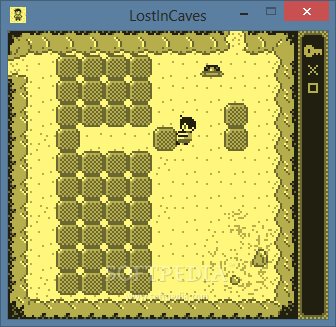

#Lost caves of utah cracked
And, I had just turned 10 in 1982 when my grandfather believed he had cracked the code of the Peralta Stones and that they had revealed the location of the treasure to be in the American southwest, so he led an expedition with my two uncles John and Paul into the four corners area of the American southwest, to a small town in Kanab, Utah. I went out on my first expedition with my grandfather and uncles when I was about 7 years old in 1979.

Unfortunately, they never made it back to the Americas. So, my grandfather's theory was that de Vaca and Estevenico created the Peralta Stones as a guide to lead them back to the treasure locations that were revealed to them to be in what is now southwest America. It was my grandfather's theory that the two lost explorers witnessed and learned much about the lost Aztec treasures from the indigenous tribes, but they were not allowed to write about it in the diary because knowledge of any hidden treasure would have been meant for the Spanish king only. He studied the personal diary of Álvar Núñez, which describes Núñez's nine-year adventures lost in the Americas and gives some details about the indigenous tribes, the animals, plant life and the treasures they witnessed while in captivity during their first two years in the Americas. My grandfather's research into Álvar Núñez Cabeza de Vaca and Estevenico is extensive. It was my grandfather's belief that the Peralta Stones were actually created by two ancient Spanish explorers, Álvar Núñez Cabeza de Vaca and Estevenico, survivors of a 1527 Spanish expedition to the Americas. My family believes this treasure would likely be made up of tons of gold and silver, jewels, emeralds, ruby's, turquoise and other precious stones, golden ancient religious artifacts and relics, and ancient records.

Legends of this possible treasure suggest that in the 1500s, riches from the empire of Aztec Emperor Montezuma II were either discarded by Spanish invaders as they were driven out by Aztecs, or hidden somewhere in Mexico or the American Southwest by the Aztecs. Stone maps and ancient treasureĪfter years of research my grandfather dismissed the theory that the Peralta Stones lead to the Lost Dutchman's treasure and instead believed they lead to Montezuma's Treasure.
#Lost caves of utah crack
My grandfather strongly believed he was being called to crack the code of these ancient stones and for the next 18 years he spent time each day researching, meditating, vision questing and dreaming about deciphering them. This article electrified my grandfather and uncles' interests and they began researching these stone tablets. Eventually they picked up a metal detector to expand their search, getting further away from the riverbeds in the hopes of finding lost gold.Īs fate would have it, one day in 1965 when they were helping a neighbor clean out her basement, they discovered a 1964 Life magazine that had an article in it about the "Peralta Stones." These stone tablets had been discovered in 1949 and some believed they were maps that led to the fabled Lost Dutchman's Gold Mine gold said to be hidden somewhere in Arizona in the 1900s by a man called Jacob Waltz. They would regularly go panning for gold on the weekends to many different locations like Grass Valley in California, the Sacramento River, and the American River. My grandfather Raymond Dillman and my two uncles John and Paul Dillman started their journey as a family hobby.
#Lost caves of utah full
As a young child, I remember listening to my grandfather and uncles talking around the dinner table about the legends of lost treasures of the Aztecs and I realized even then that life was truly full of mystery and adventure waiting to be discovered.īy the time I was born in California in 1972, my family had already been in the business of treasure hunting for several decades.


 0 kommentar(er)
0 kommentar(er)
